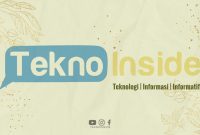Monty Python and the Holy Grail, a cult classic comedy film released in 1975, was a collaborative effort by the famous British comedy group Monty Python. The film, known for its absurd humor and unforgettable scenes, has gained immense popularity over the years. But have you ever wondered who financed this masterpiece?
At the time of its production, securing funds for independent films was often a challenging task. Monty Python, known for their unconventional approach, faced a similar hurdle when it came to financing their ambitious project, The Holy Grail.
Contrary to popular belief, the film was not backed by any major Hollywood studios. Instead, Monty Python opted for a rather unconventional approach to secure the necessary funds – they turned to their loyal fans and supporters.
The Genesis of Financing
The story of how Monty Python financed The Holy Grail begins with their successful television show, “Monty Python’s Flying Circus.” The show, which aired from 1969 to 1974, had a dedicated fan base that eagerly awaited each episode.
Recognizing the potential of their fanbase, the Pythons decided to reach out to them for financial support. They offered the opportunity for fans to become “executive producers” of the film by purchasing shares in the production company, Python (Monty) Pictures Ltd.
This unique approach allowed the fans to actively participate in the creation of the film and gave them a sense of ownership. In return for their investment, the “executive producers” received certain perks, such as a share of the film’s profits, a signed copy of the script, and even a chance to visit the film set.
The Birth of the Film
With the financial backing from their devoted fans, Monty Python began the production of The Holy Grail. The film was co-directed by Terry Gilliam and Terry Jones, two prominent members of the comedy group.
The Pythons utilized their unique and innovative comedic style to create a film that would leave a lasting impact on the audience. The Holy Grail was a parody of the Arthurian legend, filled with hilarious sketches, memorable characters, and, of course, the iconic quest for the Holy Grail itself.
The Success and Legacy
Despite the unconventional financing method, The Holy Grail turned out to be a massive success both critically and commercially. The film grossed over $5 million at the box office, surpassing its relatively modest budget.
The success of The Holy Grail further solidified Monty Python’s status as comedy legends. Their unique approach to financing not only allowed them to create the film they envisioned but also demonstrated the power of a dedicated and loyal fanbase.
Even today, Monty Python and the Holy Grail continues to entertain audiences across the globe. Its influence can be seen in various forms of media, inspiring countless comedians and filmmakers.
Conclusion
In conclusion, Monty Python and the Holy Grail, a comedy masterpiece, was financed through an unconventional method. By reaching out to their dedicated fans and turning them into “executive producers,” Monty Python successfully secured the funds needed to bring their vision to life. The film’s success not only showcased the comedic genius of the group but also emphasized the importance of a supportive fanbase. Monty Python’s unique approach to financing The Holy Grail will forever be remembered as an innovative and successful endeavor in the world of filmmaking.




